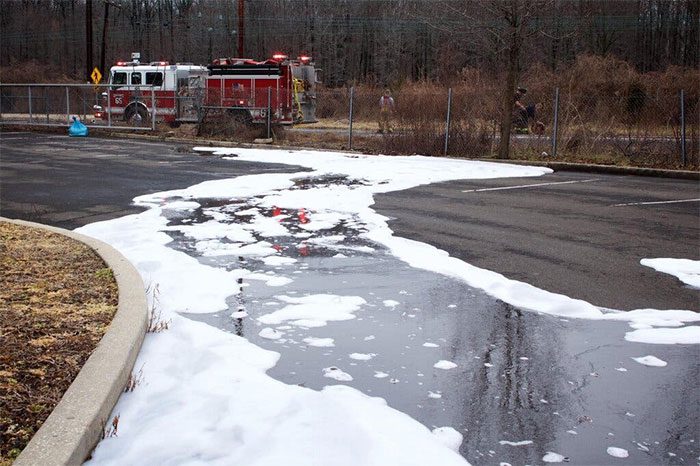“Forever chemicals” can persist indefinitely in the air, water, and soil. However, scientists have discovered a breakthrough method to destroy them.
According to AFP news agency, on August 18, scientists from the United States and China announced that they have finally found a groundbreaking method to decompose “forever chemicals” known as PFAS by using relatively low temperatures and common chemicals.

Residual firefighting foam after handling a tanker accident in Pennsylvania, USA. Forever chemicals are everywhere, including in this foam, and in non-stick cookware… (Photo: NYT/ALAMY)
Previously, destroying PFAS required strong methods, such as incineration at extremely high temperatures or using ultrasound.
However, researchers at Northwestern University recently stated that PFAS can be destroyed by using two relatively harmless chemicals: sodium hydroxide, also known as alkaline solution (a chemical used in soap production) and dimethyl sulfoxide (a chemical approved for treating bladder pain syndrome).
Their research results were published in the journal Science, potentially offering a solution for these forever chemicals, which pose a long-term threat to the environment, pets, and humans.
PFAS were first developed in the 1940s. This synthetic chemical is now found in many products such as non-stick cookware, water-repellent fabrics, and firefighting foam.
This chemical can persist indefinitely in the air, water, and soil, which is why they are often referred to as “forever chemicals.” The difficulty in breaking down PFAS stems from their carbon-fluoride bonds, one of the strongest types of bonds in organic chemistry.
A study published last week by scientists from Stockholm University suggested that rainwater everywhere on the planet is unsafe for drinking due to PFAS contamination.





















































